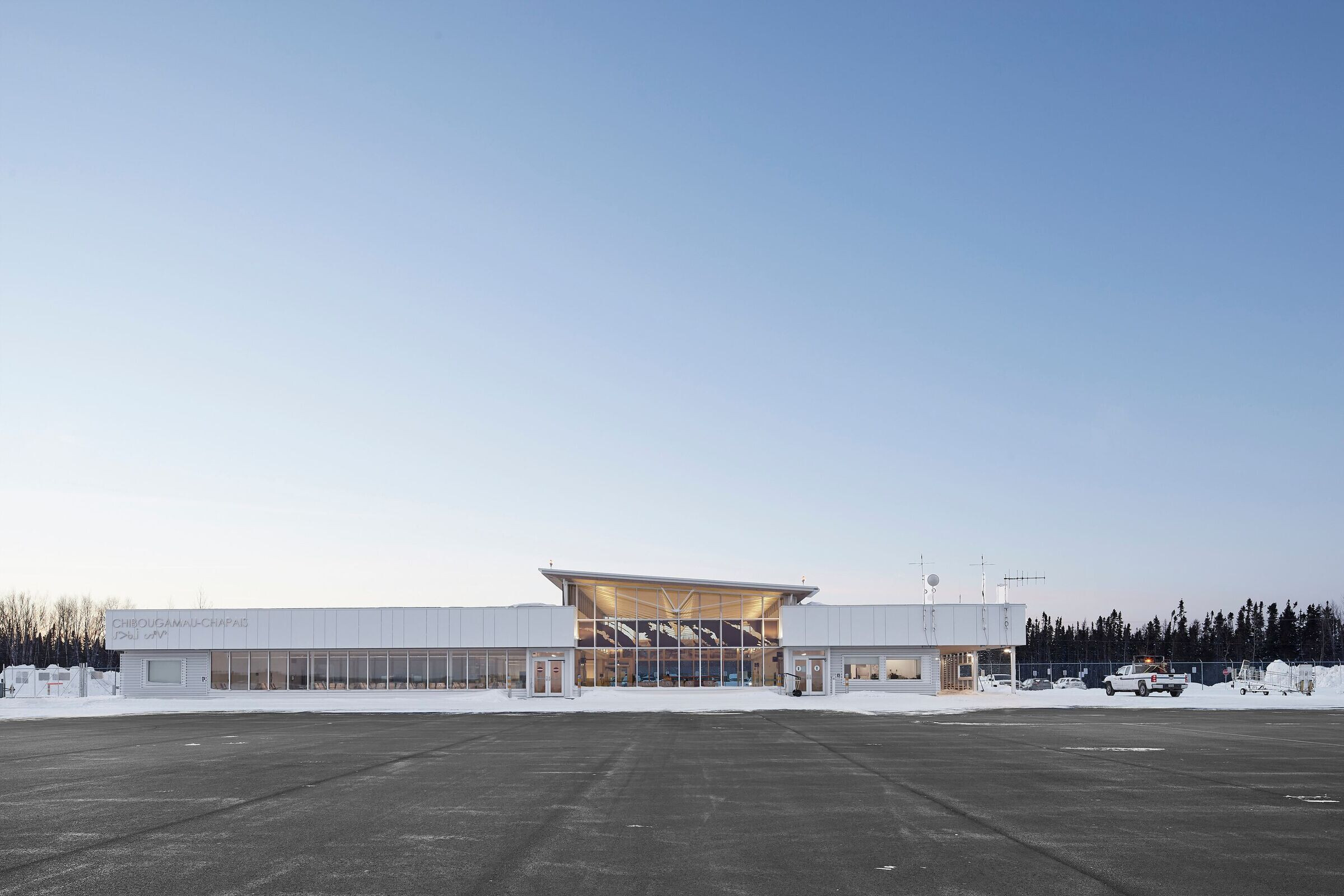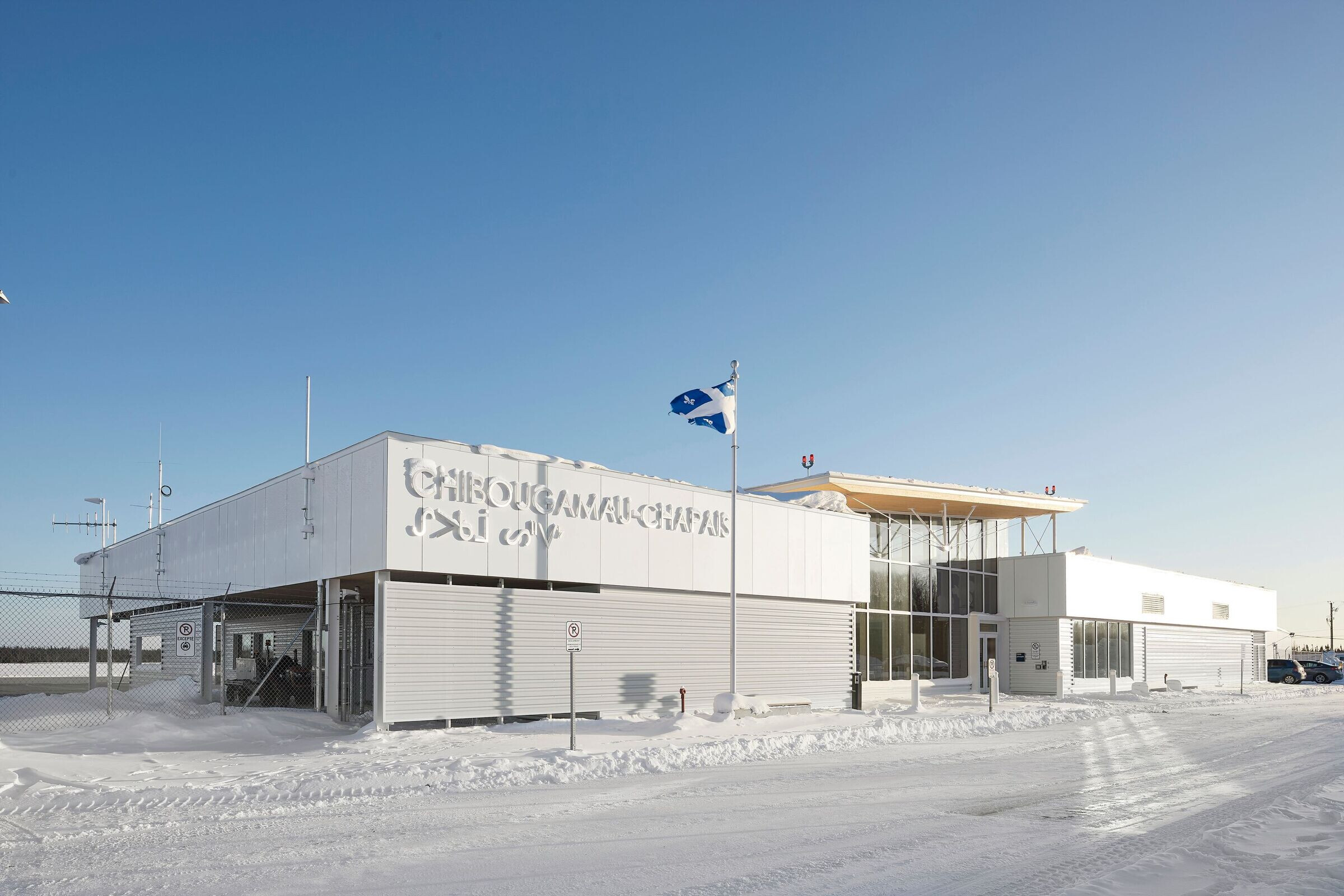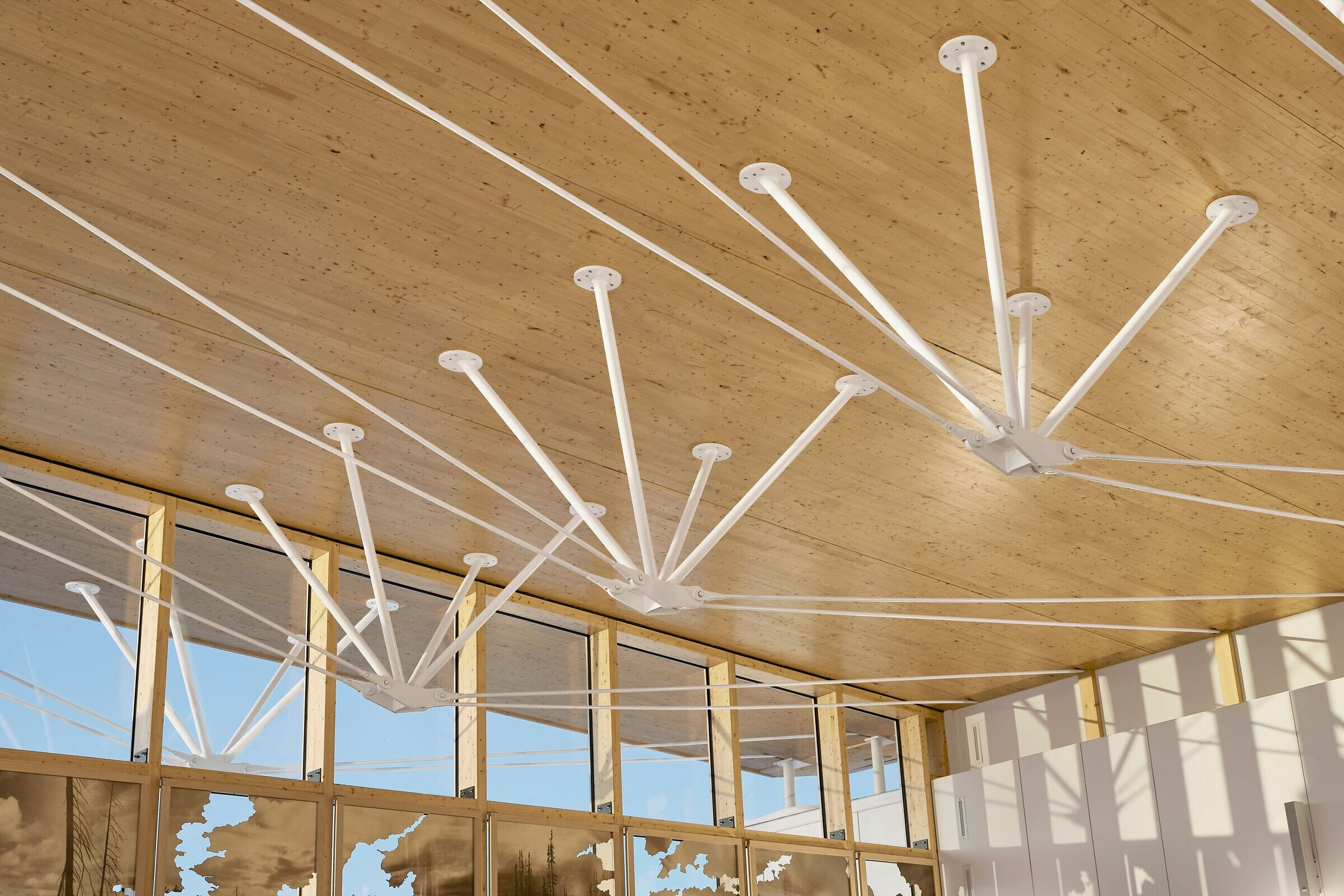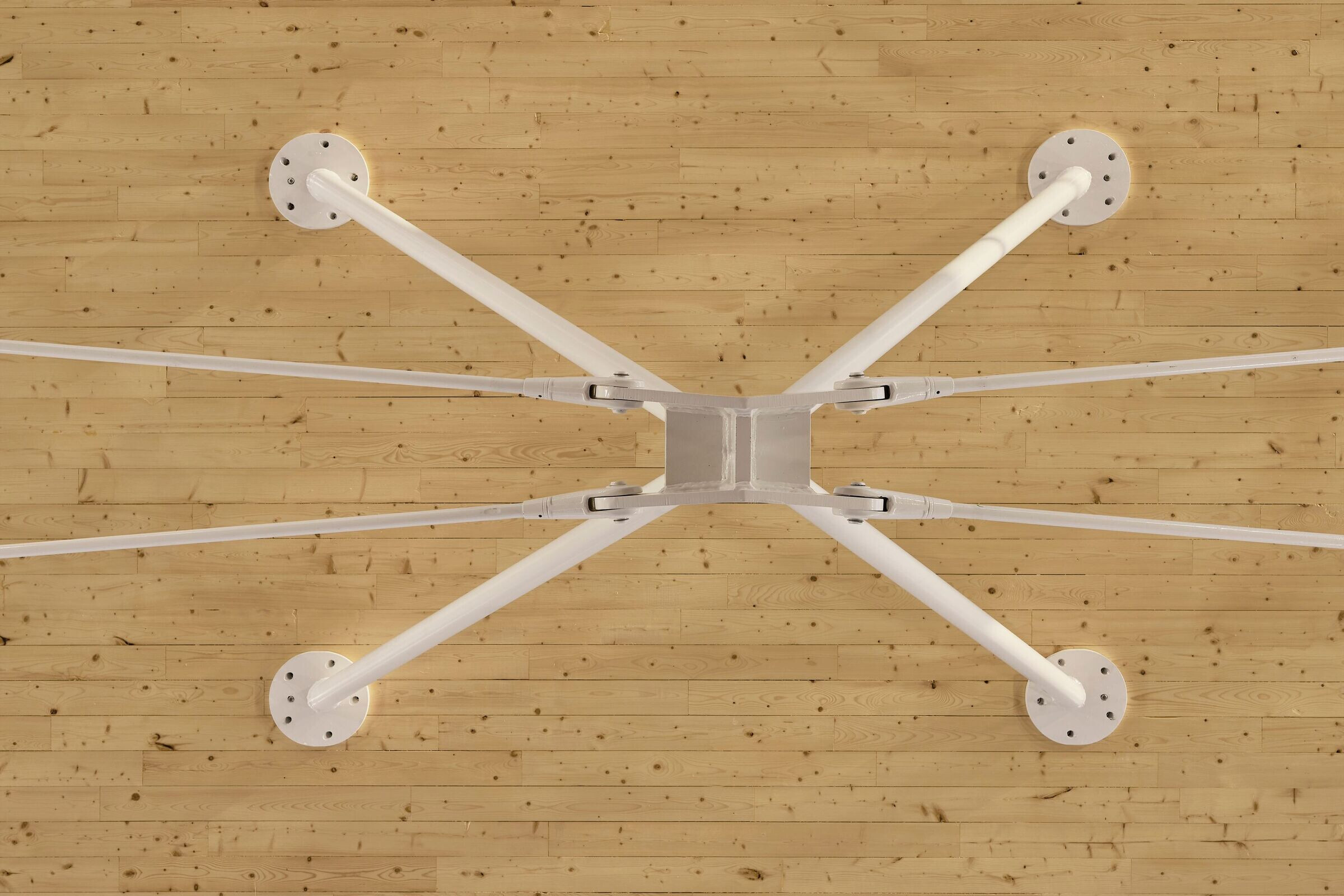The Chibougamau-Chapais airport is the gateway to the Eeyou Istchee James Bay region (Québec, Canada). It services a large territory that includes the communities of Chibougamau, Chapais, and Oujé-Bougoumou. Faced with growing passenger traffic, a new terminal building was deemed necessary to meet the increasing demand. The new terminal was designed according to the latest standards in order to provide seamless passenger experiences and to express the aspirations and culture of the communities it services.

In addition to servicing air travelers, the airport is used for freight, medical evacuations, and forest firefighting operations. All of these services needed to be maintained on a continuous basis, posing a significant challenge during construction. Rigorous planning and construction phasing, as well as careful site selection for the new terminal, allowed operations to continue within the existing terminal throughout construction, and for the airport tarmac to be enlarged once the new terminal was in operation.

The new building is composed of two low structures on either side of a glazed concourse. The latter serves as a central hub for passengers and connects all terminal functions and services, ensuring that they are easily identifiable and accessible. Its design establishes visual connectivity from the parking lot to the runway. Waiting travelers can watch their plane on the tarmac while others can monitor the pick-up and drop-off zone. This fluidity is further reinforced by the consistent use of materials and lighting treatment when moving from interior to exterior spaces.

The exterior façade features the name of the airport in Cree and in French and is adorned with artwork by Emmanuelle Gendron, cleverly integrated into the transparency of the timber curtain walls and paying homage to the Eeyou Istchee region. Gendron’s work was selected by a committee which included representatives from the communities of Chibougamau, Chapais, and Oujé-Bougoumou.

Highlighting its proximity to the boreal forest, the terminal’s design showcases locally produced wood, particularly high-performance products such as glulam and cross-laminated timber (CLT) structural slabs.

The waiting area is delimited on three sides by timber curtain walls, topped by a raised roof forming a south-facing clerestory. The roof structure combines engineered wood and steel components. Stressed CLT panels spanning 12m are supported by wood columns at each end, reinforced with high-strength steel rods tying the centre to the extremities.

The mixed structural system allows for large spans, creating an open public space. The system also allows for reduced roof thickness, while contributing to the interior shading strategy through its generous overhangs.

The curtain walls provide natural light and improved energy efficiency, contributing to structural bracing, while the clerestory acts as a load-bearing axis, eliminating the need for a structural beam. This minimalist, highly efficient approach underlines the project’s core design principles: transparency, lightness, comfort, and functionality.
Team:
ARCHITECTS : EVOQ + ARTCAD in joint venture
Alain Fournier
Joël Sirard
Sami Tannoury
Kim An Truong
Alexandre Jean-Bergeron
François Belleau
Karine Dieujuste
Huayna Sanchez Alfaro
Éric Leblanc
Louis Babin-St-Jean
Eloïse Barry
Catherine Fontaine
Alexis Charbonneau
Pierre Bouchard
Geneviève René
Edith Dennis-Larocque
CLIENT: Ministère des Transports du Québec
ENGINEERS: SNC-Lavalin et CIMA+
GENERAL CONTRACTOR: Construction Unibec
ENGINEERED WOOD: Nordic Structures
ARTWORK: Emmanuelle Gendron

Material Used:
1. UNICEL Architectural / RAICO: THERM+ Timber H-I – Timber curtain wall
2. NORDIC STRUCTURES: NORDIC X-LAM Architectural – Cross-Laminated Timber (CLT)
3. SWISSPEARL: Swisspearl CARAT Onyx 7099 - 11
4. BESISTA: BESISTA rod systems
5. ARCONAS: Bernù Aero Wood seating system – Maple finish










































